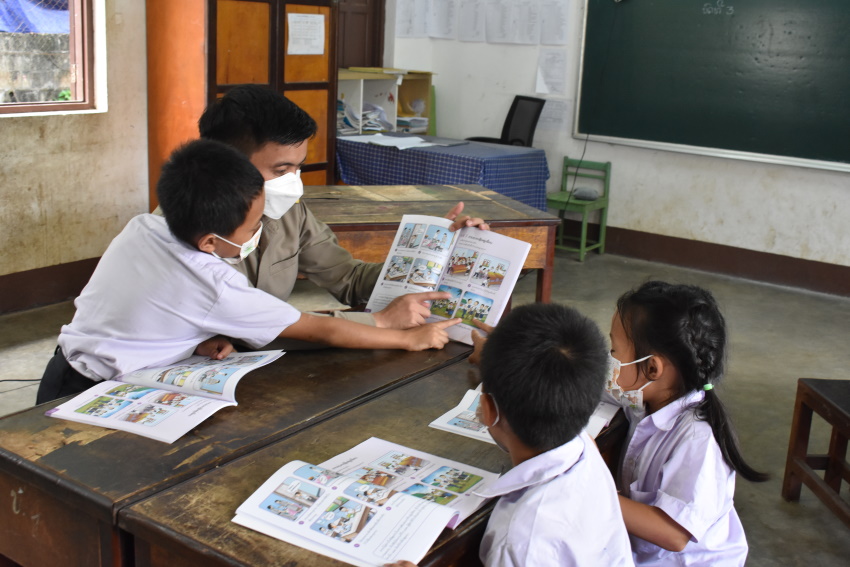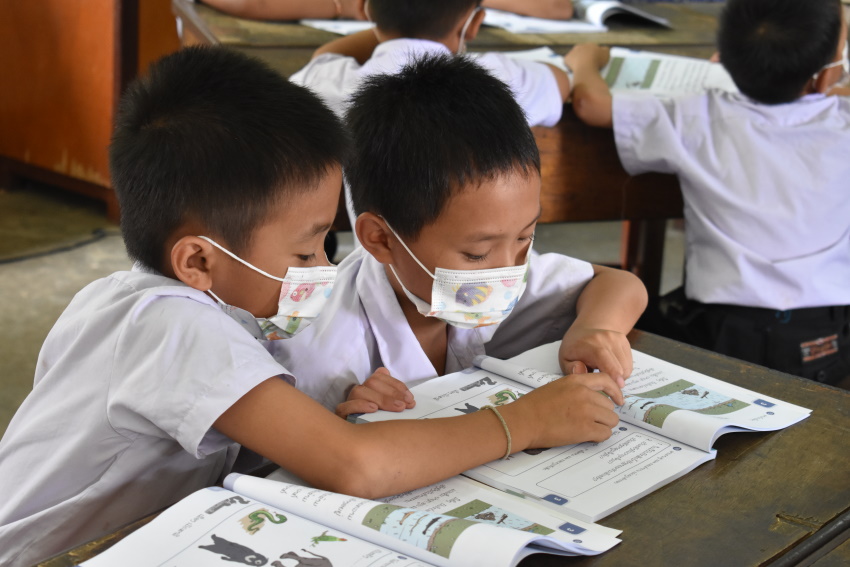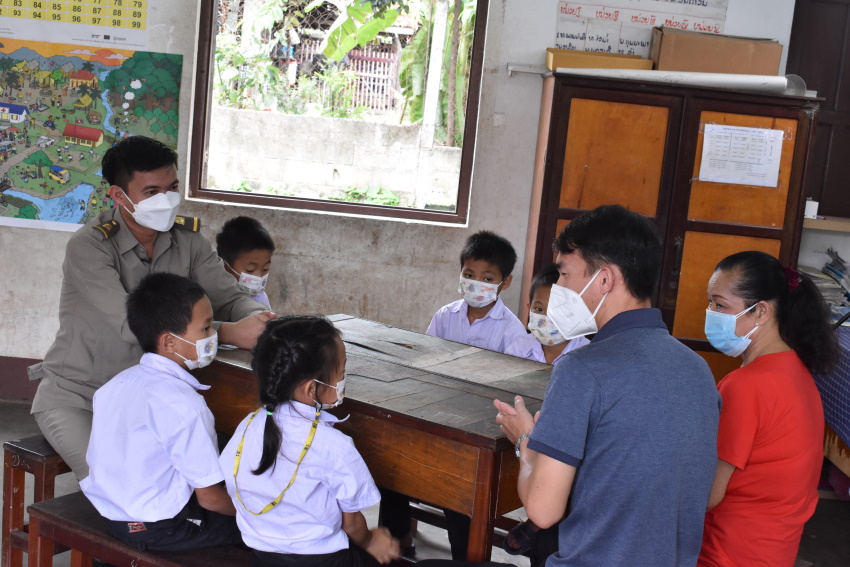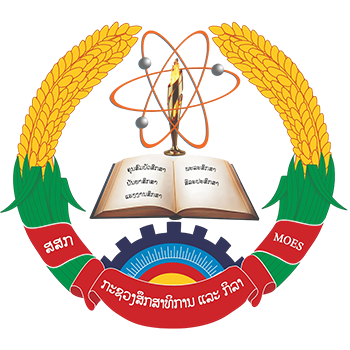
E-learning team filming the new video
With this new training video, teachers can learn 5 basic techniques for supporting students from non-Lao speaking backgrounds
Lao PDR is a very diverse country, with four main ethnolinguistics groups incorporating over 50 languages. The mother tongue of almost 40% of people in Lao PDR is a language other than Lao and primary teachers can experience challenges with teaching children who do not master Lao. Indeed, if students aren’t competent in Lao, the official language of instruction, it will hinder their ability to understand the teacher and content of lessons and participate fully in learning activities.
To support teachers in their duty to ensure all students in the classroom have equal opportunities to participate, the E-learning team from the Research Institute of Educational Sciences has just released a new teacher development video on this topic. The video was produced with the support of Australia through the BEQUAL program. It is filmed in classrooms in Lao PDR to show real examples of the techniques. The video is also dubbed in Sign Language to be more accessible for all.
In this new training video for teachers and trainers, five basic techniques for supporting students from non-Lao speaking backgrounds are detailed. The techniques are simple and can be easily applied in the classroom by teachers who do not speak the students’ home language. The objective of those techniques is to ensure that all children can participate more meaningfully in learning.

Supporting students with Lao Language

Allowing students speak their home language to support each other
The first technique demonstrated in the video is how to adjust classroom language by speaking more slowly, using simple vocabulary, making short sentences and, most importantly, using body language as 70% of communication is conveyed non-verbally.
The second technique is to ask simple closed questions to check understanding as students often won’t say if they don’t understand and will simply stop participating.
Another recommendation is to allow the use of students’ home language at different points in lessons, such as to explain the meaning of a word to another student or discuss understanding of an instruction. Research indicates that having a strong hone-language foundation leads to a much better understanding of the curriculum as well as a more positive attitude towards school.
Creating a peer support system between students not confident in Lao with students very proficient in Lao is another way teachers can support their students. The video also gives some guidance on peer support systems.
The last technique is to create additional support activities at lunch or at the end of the day to help the students with the areas of Lao they find challenging. Those extension activities should be fun and interactive, and parents can be invited to participate. The new Lao Language teacher guides propose many different literacy games and activities that teachers can choose from when designing extension activities.
The video is released broadly via the ESTV – Education and Sports TV Channel on Lao Satellite 8, on Khang Panya Lao and on the ວິດີໂອສໍາລັບການພັດທະນາຄູ Teacher Development Videos YouTube channel.
With more than 1.9 million views, the ວິດີໂອສໍາລັບການພັດທະນາຄູ Teacher Development Videos YouTube channel launched in 2019 by the Ministry of Education and Sports with the support of Australia, through the BEQUAL program, is a great success. It contains training videos and audio materials for primary teachers, teacher trainers, and pedagogical advisors. The videos cover a range of subjects and techniques around the new curriculum and the new active learning pedagogical approach. Teachers use them to prepare lessons, improve their teaching method, and learn or review a specific technique. They also play the audio tracks containing music, songs, and English stories to students in the classroom.




 ພາສາລາວ
ພາສາລາວ